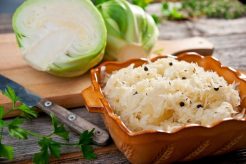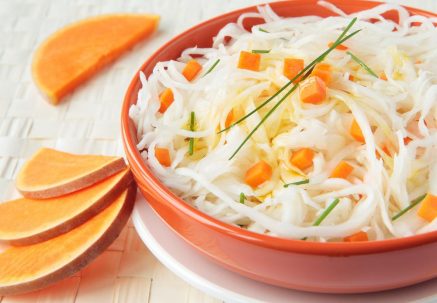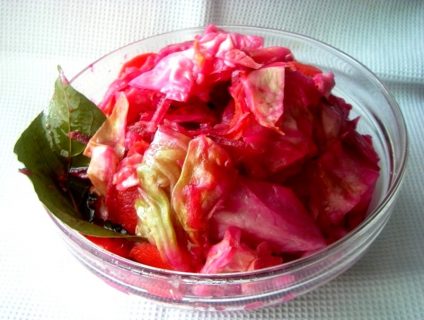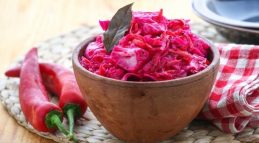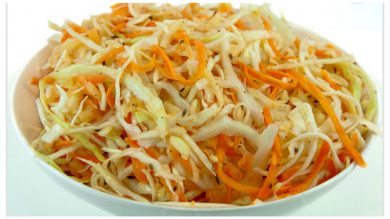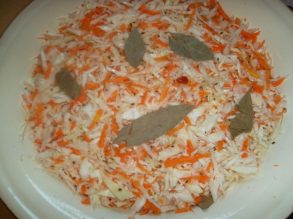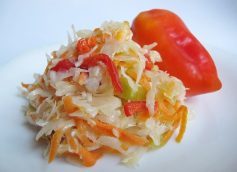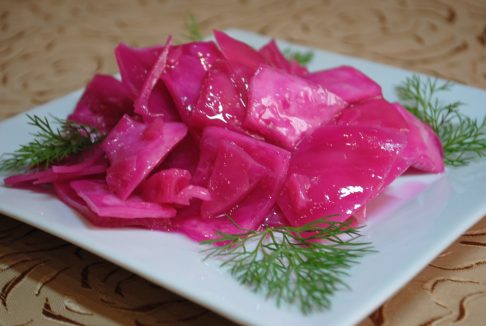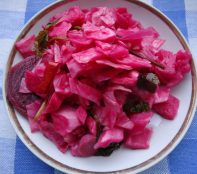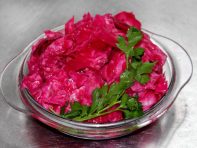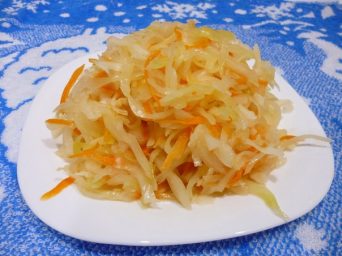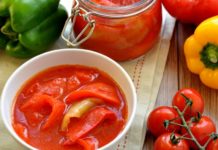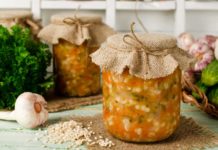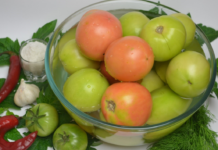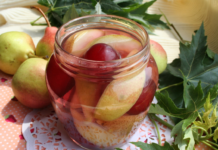Fast salting of cabbage was not available to our ancestors. Once salt was valued more than gold and was a frequent guest not on every table. Preserving foods in the absence of preservatives was not easy. Previous methods required a long exposure of the workpieces under strictly specified conditions.
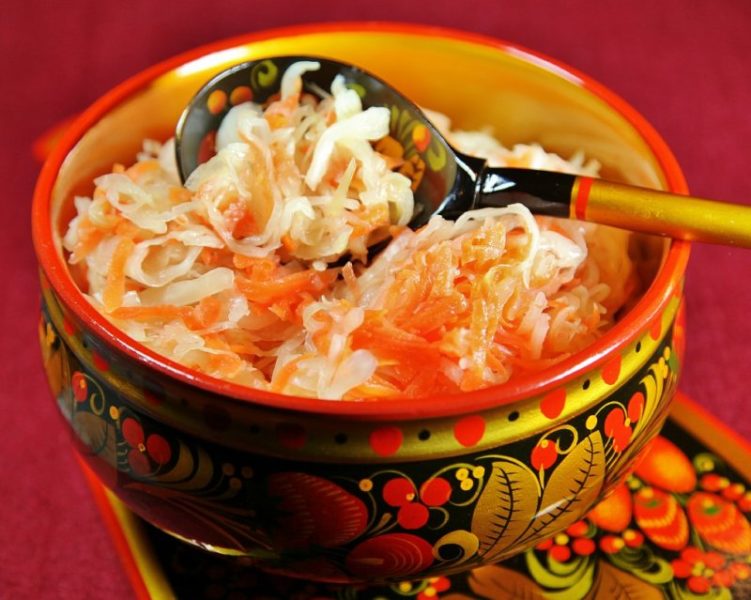
Our capabilities allow us to add various spices and spices to the food, with which the food becomes richer in taste, canned faster and better stored. Salt, which we generously put in billets, prevents the growth of pathogenic microorganisms and inhibits the fermentation process. Salted cabbage no longer needs to be kept at room temperature for weeks, waiting for it to become suitable for long-term storage. A variety of recipes will allow you to bring the product to the desired quality in just a few days or even hours.
Material Content:
- 1 Salt or ferment - what's the difference?
- 2 Cabbage Salting Basics
- 3 The best varieties of cabbage for pickling and pickling
- 4 Preparation: place, tools, raw materials
- 5 Winter cabbage pickling recipes
- 5.1 Salting cabbage with beets
- 5.2 In jars of pepper and garlic
- 5.3 Salted cabbage with spices
- 5.4 Salting cabbage with dill grains
- 5.5 In jars of apples
- 5.6 In banks cold
- 5.7 Hot salting cabbage
- 5.8 Georgian beetroot
- 5.9 Harvesting crispy sauerkraut for the winter in banks
- 5.10 With apples and cranberries in a barrel
- 5.11 With bell pepper, carrots and onions in a jar
- 5.12 With horseradish and garlic
- 5.13 With honey and lemon
- 5.14 Armenian cabbage pickling
- 5.15 Korean style Chinese cabbage recipe
- 6 How to pickle cabbage so that it is crispy
- 7 Pickle vegetables without vinegar
Salt or ferment - what's the difference?
Actually there is no difference, the terms refer to the same process. By salting is meant a preservation method in which the main role is given to lactic acid.
This component is released during the natural fermentation of fruits and vegetables, gives the dish a specific taste and is a guarantee of the safety of products. Only the processing of various kinds of crops is described in various terms.So, for example, apples “wet”, cucumbers “salt”, and “sauerkraut”.
Despite the differences in the names, the essence of this does not change. Everywhere, lactic acid and partially salt act as a preservative, which controls the fermentation process, protects the product from souring, and accelerates salting, thereby reducing the cooking time.
In the days when salt was an expensive pleasure, pure fermentation was used in the villages. Cabbage was cut, laid under oppression and, without air, was fermented in its own juice.
So that the product does not deteriorate, it had to be tamped hard. At the slightest ingress of oxygen, lactic fermentation could stop, and the cabbage would simply rot. Long exposure guaranteed reliable preservation and storage for a long time.
Read also: fresh cabbage
Ready cabbage was placed in a cold room. At low temperatures, lactic acid bacteria reduced activity. However, the fermentation process did not stop, and the product became acidic over time.
Salt, which is actively added in modern recipes, not only additionally preserves the product, but also inhibits the growth of lactic acid bacteria. Therefore, cabbage, fermented with the use of salt, can be stored much longer.
Cabbage Salting Basics
For conservation to be successful, four important conditions must be observed:
- choose a vegetable of the appropriate variety;
- protect the product from spoilage;
- create an environment suitable for the development of lactic acid bacteria;
- bring all work surfaces in perfect condition.
How does salting happen? The lactic acid bacteria that are present on the leaves of the vegetable ferment the sugars contained in the cabbage. Accordingly, the more simple carbohydrates in the vegetable, the more active the conservation. That is why you need to choose varieties with the optimal chemical composition. Otherwise, sugar will have to be added.
To prevent harmful microorganisms from developing along with lactic acid bacteria, try to remove air from the product as much as possible.
To do this, cabbage should be well condensed. It is better to spread the product in small layers and carefully crush each of them.

It is advisable to put oppression on top, then the cabbage will drown a little in its own juice. As oppression, you can use a well-washed stone or a container of water. A press is placed on top of the workpiece. You can use a flat plate or made with your own wooden disc. And already directly put on the press weighting agent.
For the development of lactic acid bacteria, a temperature of 15 to 22 ° C is needed. Therefore, after all preparations, the cabbage should be left at room temperature. Further, when the product gains enough acid, the activity of the bacteria must be reduced by removing the workpiece in a cool place. In villages, it is usually put in a cellar, where the temperature is kept within 8-12 ° C. And the finished product should be stored in the refrigerator at 0-2 ° C.
And, of course, during cooking, do not forget about cleanliness. Thoroughly rinse all appliances, dishes, sterilize jars. We thoroughly clean the vegetables. Cut off the corrupted parts. In general, we prevent dirt from entering the product.
The best varieties of cabbage for pickling and pickling
For pickling and pickling, mid-early and medium-late cabbage varieties and hybrids are best suited, in which the ripening period from emergence to complete head formation is 115-160 days.
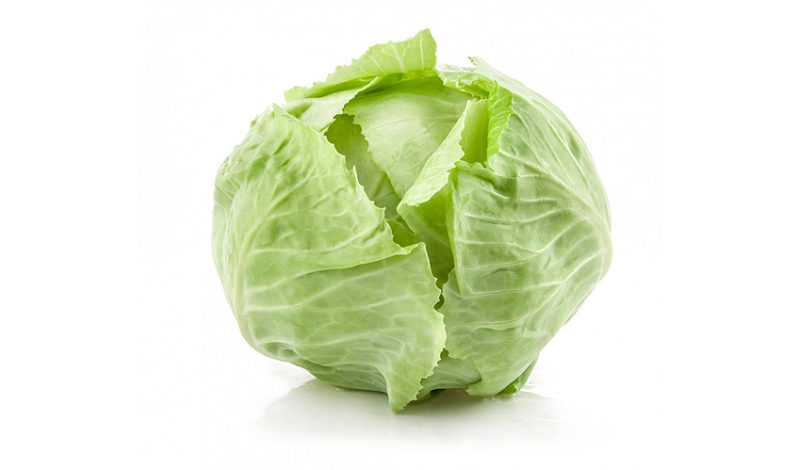
The most popular of them are:
- "Glory";
- "Present";
- Midor
- "Merchant";
- "Dobrovodskaya";
- "Krautman."
Cabbage of these varieties forms a large head of cabbage with a small stalk. The mass of one vegetable can reach 3 kg. The inner leaves are white or greenish, very densely collected, strong, juicy, sweet, contain a large amount of carbohydrates.
Cabbage of these varieties lies well even without salting. A pickled, made according to all the rules of the harvest, it turns out delicious and crispy, can be stored until next season.
Preparation: place, tools, raw materials
Sauerkraut is not a laborious process. The bulk of the work fits in just three stages. Before laying vegetables must be peeled, cut and salt.
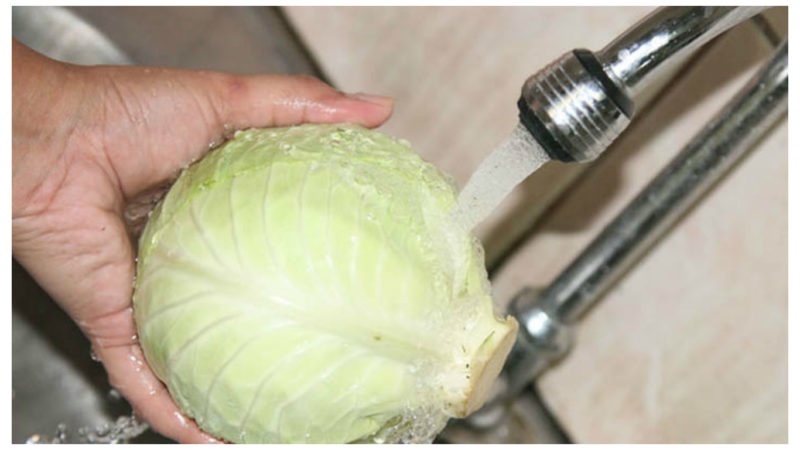
We wash the cabbage. We remove the spoiled leaves, cut off all the defects. Cut the stump. Leave a clean white head of cabbage. We do the same with other ingredients. If we put carrots, it means that we also clean it and remove all spoiled places.
We will cut the vegetables on the table. Prepare the place, removing all unnecessary. You can chop cabbage on both plastic and wooden boards. For cutting, in addition to the usual universal kitchen knife, it is convenient to use a special knife-shredder or grater-shredder.
If the brine is prepared separately, we will select a suitable container for it. If the cabbage is simply rubbed with salt - we will prepare a capacious bowl or basin in which we will mix everything with our hands.
Stack vegetables in acid-resistant dishes. An enameled pan is suitable for this. But some recipes include laying cabbage immediately in banks. If vegetables are souring in a wide bowl, they must be crushed with oppression so that the product disappears under a layer of juice or brine.
Vegetables in jars will also produce juice. Therefore, if the containers are filled to the top, it is better to put them in the basin so that the liquid flows into it, and not on the floor.
When the cabbage starts to ferment, gas will accumulate in it. Its excess can spoil the taste of the finished product. Therefore, we will periodically pierce the workpiece with a wooden stick, releasing the excess. During fermentation, a froth cap will appear on the cabbage, which must be carefully removed with a clean spoon.
Remember that any items that we touch on the product: knives, boards, spoons, must be thoroughly washed and doused with boiling water. The same applies to containers - pots and jars.
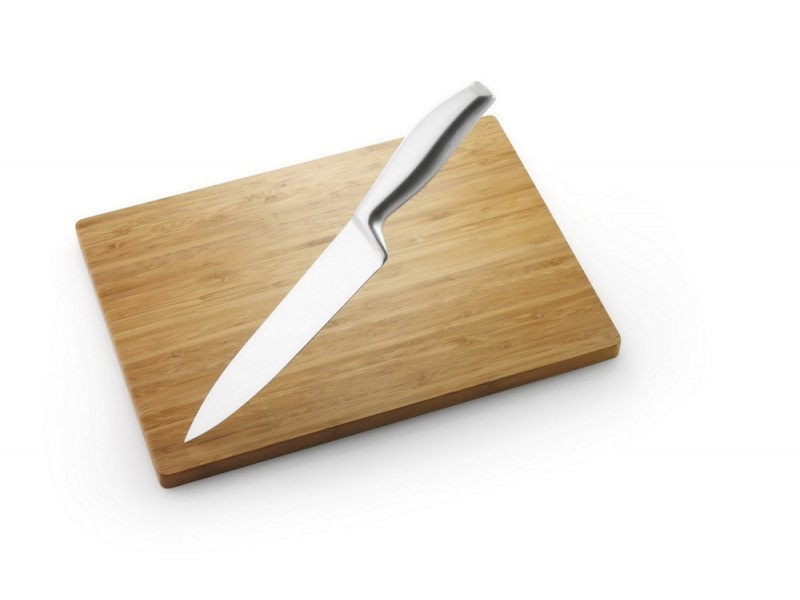
If we cook cabbage at a time, then the cans can not be sterilized, but washed with soap or soda, doused with hot water. Close the blank with a clean plastic lid. In this form, it can be stored no longer than three months.
If we want to save cabbage until next season, then the banks will need to be sterilized and rolled up with metal lids.
Winter cabbage pickling recipes
Almost every family has its own recipe. In what way do not sauerkraut! It is ground with salt, soaked in cold brine with the addition of vinegar, poured with salted boiling water.
Especially good cabbage with the addition of various spices and spices. Cranberries, peppers, beets, carrots, onions, garlic, etc. are placed in the blanks. All this, of course, affects the quality of the finished product. Sauerkraut can be different.
Salting cabbage with beets
Thanks to beets, the blanks acquire a beautiful shade, an unusual taste, additionally enriched with vitamin supplements.
Structure:
- cabbage without a stalk - 5 kg;
- root crops of carrots - 0.5 kg;
- beets without peel - 250 grams;
- Bulgarian pepper - 0.5 kg;
- several small onions;
- bay leaves, allspice peas, caraway seeds, cloves;
- salt - half a cup.
Shredded vegetables, except onions, shred or cut into strips, grind together with salt and seasonings, using a large basin. In the middle of the workpiece we place the onion turnip.
We set the container in the basin, cover it with gauze on top so that dirt and dust do not get. Leave to roam at room temperature. During the day, pierce the cabbage with a wooden stick several times. We follow the process. Cabbage readiness is determined when foam ceases to stand out. It may take 2 to 4 days to prepare.
We close the cans with plastic caps. If you need to preserve cabbage for a long time, fill the vegetables with boiled vegetable oil in a 1 cm layer.
In jars of pepper and garlic

This recipe allows you to ferment cabbage in a hot way. We cook vegetables, clean the main component. Cut the tops of the stumps flush. Divide the heads into quarters.
We will prepare a delicious dressing of fresh carrots and bell pepper. Shred vegetables with a combine.Add the bright mixture to the grated celery root and finely chopped garlic. Add some fresh corn to the vegetable dressing. The number of components depends on the capabilities of the hostess.
We lay all vegetables in layers in a wide enameled bowl. Layers of cabbage should alternate with vegetable dressing. The more tiers you get, the better.
We will salt the vegetables with a brine. Bring to a boil 4 liters of water, dilute in it 200 grams of sugar and salt, five to six peas of black pepper and a few leaves of bay leaf. Turn off the brine after dissolving the salt and sugar. Let's wait until the marinade cools down a bit.
Pour filling into a bowl of cabbage. Vegetables should completely hide under it. Press the workpiece with a press. Leave for two weeks to ferment in a cool cellar or on the balcony.
Salted cabbage with spices

This is another unusual recipe for pickling cabbage for the winter. For 11 kg of vegetable we need about a kilogram of apples and 300 grams of carrots. We also take one handful of lingonberries and cranberries. We will create an unusual aroma with the help of caraway seeds, allspice, anise and bay leaf. We will add spices to taste, and we will take salts in an amount of 2/3 glasses.
We chop cabbage with a shredder. Grind carrots on a coarse grater. We divide the apples into quarters and so that they do not darken, we withstand them for some time in cold salted water.
Mix the finished ingredients. Put the future salad in a wooden or enameled container. Press down. Leave for 10-12 days at a temperature of 18-22 ° C.
When the product stops fermenting, check its availability. The salad should slightly decrease in volume, and the juice released from vegetables should become transparent. Put the cabbage in banks. Cover them with plastic caps. In this form, the salad can stand in the refrigerator all winter.
Salting cabbage with dill grains
In this recipe, all proportions are arbitrary. For a bucket of chopped cabbage, you need to take 100 grams of salt. Carrots by volume should be a tenth of the total mass of cabbage. Dill and caraway seeds are added to taste.
Peel the vegetables, carefully cut into small straws, mix with salt and seasonings. They are laid out on the banks and tamped. They close it with a plastic cover, clean it in the basement or put it on the balcony, if it's cool. After 10 days, the product can be served.
In jars of apples
The original dish rolls right into the jars. The salad is made from cabbage, sour varieties of apples, onions and sweet bell pepper. The main component in volume should exceed the other ingredients, taken together twice. For salt, we make the following calculation: we will need to add three tablespoons for every 2 kg of cabbage.
We cut the heads of cabbage, apples, onions and peppers into beautiful, even straws or thin slices. Put on the bottom of a wide pan. Solim. Mix with a clean spoon, in no case with your hands.
Banks must be washed in advance. At the bottom of each put 2-3 bay leaves and 5 peas of black pepper.
Tightly fill the container. Cover with metal covers. Sterilize for half an hour. Sunset. Turn it upside down, let it cool and place it in the refrigerator.
In banks cold
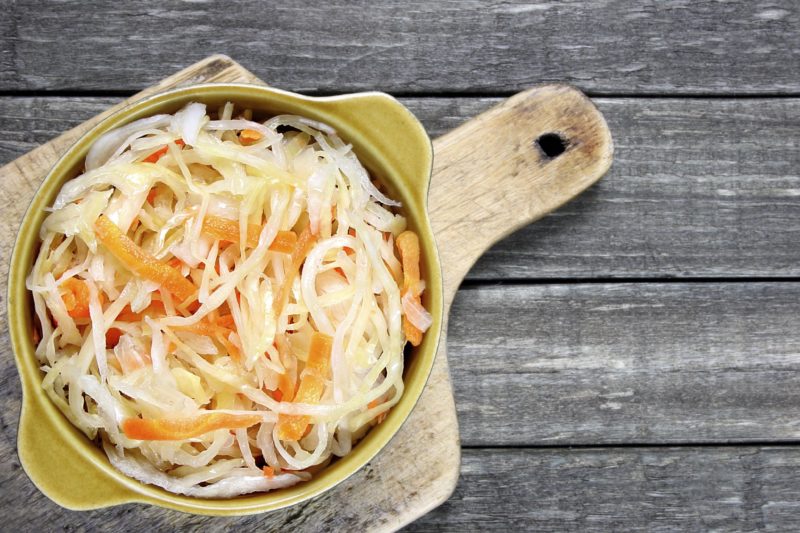
Salting cabbage in jars in brine requires a minimum of preparation time. Take 2 kg of chopped cabbage and 2 medium grated carrots for a salad. Mix the vegetables with your hands. Tightly fill the mixture with a three-liter jar.
Prepare a cold pickle. In 1.5 liters of pure water, dissolve a tablespoon of salt and sugar. Pour vegetables in a jar with this pickle. We cover the neck of the glass container with gauze. We put the kvass in a warm place. Three days later, the cabbage will be ready. To store it, you need to keep it in the cold.
Hot salting cabbage

Salting instant cabbage is popular among people who value time. This way salads are made that do not need to be aged for a long time. Vegetables are instantly saturated with brine. Such a workpiece can be served to the table literally the next day.
We prepare a beautiful vegetable mixture of thinly sliced layers of cabbage and carrots. Mix vegetables in any proportions. Put them tightly in cooked jars. Fill with brine.
In a liter of water, we dilute a tablespoon of salt, half a spoonful of sugar and a spoonful of vegetable oil. Bring the marinade to a boil and season them with vegetables.
Leave the jar uncovered for a day in a warm place. The next day, close the salad with a plastic lid and put it in the refrigerator.
Georgian beetroot
For a fragrant salad in Georgian, a beautiful large head of cabbage and two small, even beets are selected. A unique aroma is created by 2 heads of garlic, a pod of hot pepper and a bunch of fresh cilantro.
Vegetables are cut quite large. Head of cabbage can be divided into 8-12 parts. Beets must either be grated or cut into flat slices. The cloves of garlic can be put whole, or crushed coarsely. Hot pepper cut into rings. Cilantro to disassemble the branches with your hands.
Vegetables should be laid out in a pan in layers: a layer of cabbage, a layer of beets, a layer of garlic, etc. Repeat several times until the ingredients run out.
Lastly, a brine is added to the vat. Boil two liters of water and dilute 50 grams of salt in them. Let the brine cool to room temperature, and then completely cover the vegetables with it.
Georgian salad should stand warm under oppression for about two days. Then it can be laid out in banks and put in the refrigerator. There cabbage will reach the readiness from 3 to 5 days.
Harvesting crispy sauerkraut for the winter in banks
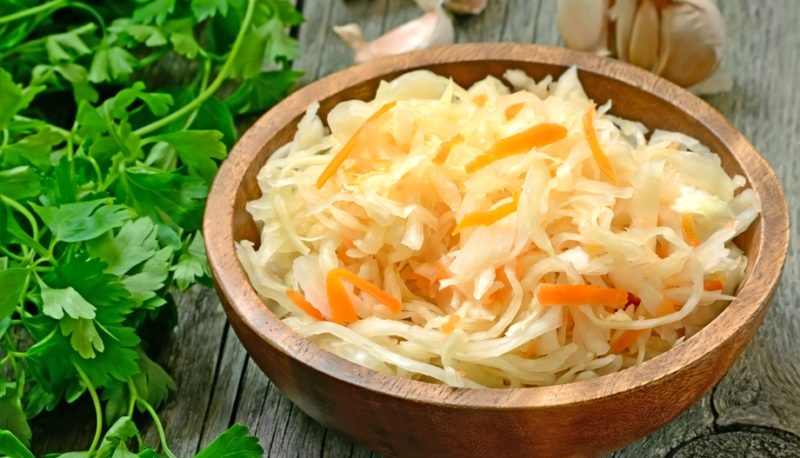
Fermenting vegetables in a jar is very convenient, because later they can be stored in the same dishes in which they were prepared.
Winter salad is shredded only from white cabbage and carrots. With root crops, do not overdo it. It contains a lot of carbohydrates, and their excess is useless to us. Excess sugar can dramatically slow down the fermentation process and the cabbage does not have time to ferment.
Carrots in the salad under discussion will occupy a tenth of the total. We cut the vegetables into strips, fold them into one wide basin and knead with our hands until the juice appears.
In a glass, mix a tablespoon of coarse salt and a teaspoon of sugar. This amount will be enough to pickle a three-liter can of cabbage.
Lay vegetables in a glass container in layers, salting each layer. When the jar is full, salt with sugar should run out.
We put the container in a warm place for three days. Once a day, cabbage will need to be pierced to the bottom with a wooden stick doused with boiling water. The finished product must be stored in the cold.
With apples and cranberries in a barrel
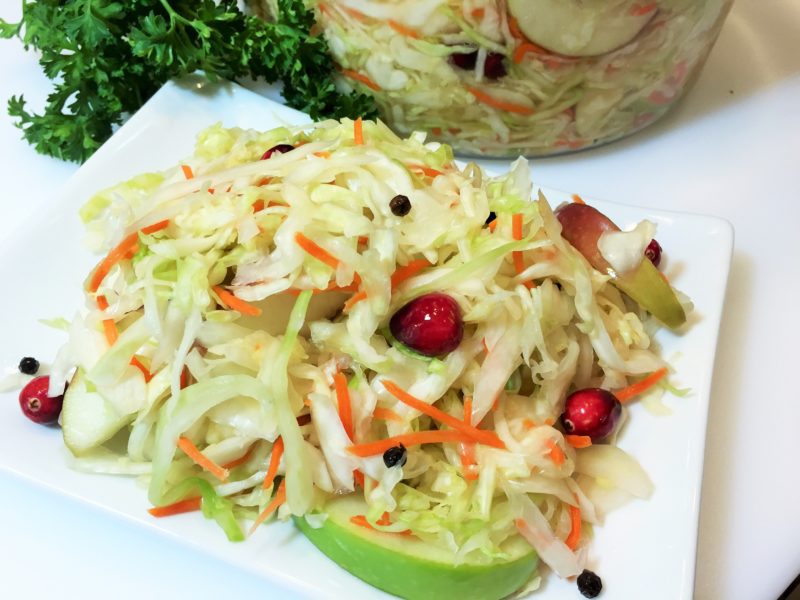
It’s not easy to find a wooden barrel today. If you still have one, try cooking cabbage according to this original recipe.
Take apples and cranberries in approximately equal proportions. Cabbage should be 5 times more than the rest of the ingredients. For each kilogram of the main vegetable, you need to put 30 grams of salt.
Mix it all together. Tamp the salad into a barrel. Put under oppression and send to heat for 5 days. During this time, cabbage will cease to ferment and absorb a lot of aromatic substances.
With bell pepper, carrots and onions in a jar
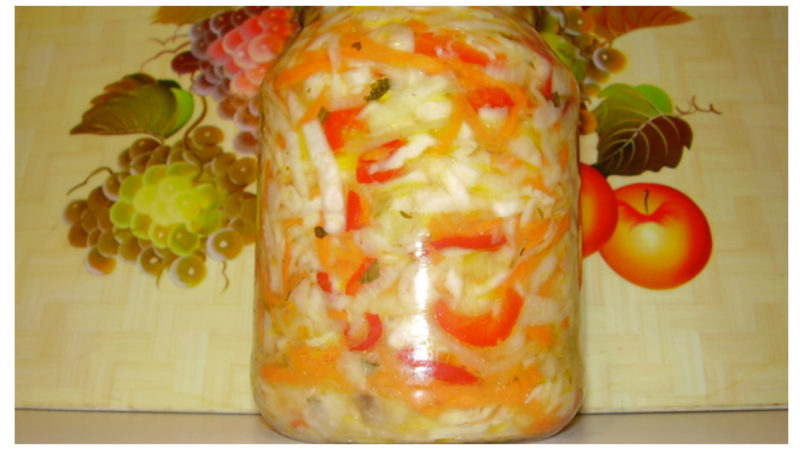
Sweet pepper and onions will add a slightly unusual taste to this salad. Carrots will also participate in the cooking process, saturating the finished dish with juiciness. The amount of cabbage is twice the amount of other vegetables. Carrots, onions and peppers are taken in equal proportions.
Vegetables should be finely chopped, mixed with salt, sugar and vegetable oil. The calculation of the ingredients will be as follows: for 3 kg of cabbage add 4 tablespoons of sugar, 2 tablespoons of salt and one tablespoon of vegetable oil. We immediately place the salad in jars and place in the refrigerator for several days.
With horseradish and garlic

Take a large cabbage and one medium carrot. Cut the main vegetable into large pieces, and let the carrots pass through the combine. Add 100 grams of grated horseradish root and a head of garlic. Squeeze the teeth through the press.
Mix the vegetables in a bowl.Add three tablespoons of salt and two sugars. Remember the mixture with our hands as if we were going to knead the dough. Put the salad in an enameled container. Put oppression on top. We remove the cabbage in heat for three days.
With honey and lemon
For a spicy salad you need a whole large head of cabbage, weighing about 3 kg. We cut the cabbage into strips and dilute the carrots and beets. We need two sweet orange root vegetables, which we grind with a grater. Choose one large beetroot and also rub on a grater, or chop in a combine.
The taste of the salad perfectly complements the lemon. We cut it directly with the skin into thin plates.
This recipe uses an unusual marinade, which is prepared on the basis of prunes and honey. To pickle one head of cabbage, you need 200 grams of dried fruit, which we first rinse, pour a glass of water and boil. Hold on fire for 3 minutes. At the end, add salt (1 spoon) and honey (4 tablespoons) to the broth.
We mix the vegetables with the marinade, immediately spread the salad into banks, close with ordinary plastic lids, without sterilizing. We put it in the refrigerator, and on the third day we will enjoy the taste of a healthy dish.
Armenian cabbage pickling

A cabbage will need medium-sized carrots, one beetroot, celery root, a bunch of cilantro, 2 hot peppers, a head of garlic. The listed vegetables, except cabbage, cut into thin large plates, pepper, respectively, rings. Divide the head into slices. Tear cilantro with our hands. We put cabbage and a mixture of vegetables in a container in layers.
Cooking brine. We dilute 150 grams of salt in three liters of water. Throw 10 peas of pepper and 3 bay leaves into a boiling solution. Add half a cinnamon stick if desired.
We cool the brine and fill them with vegetables. We leave it warm under cargo for three days.
Korean style Chinese cabbage recipe
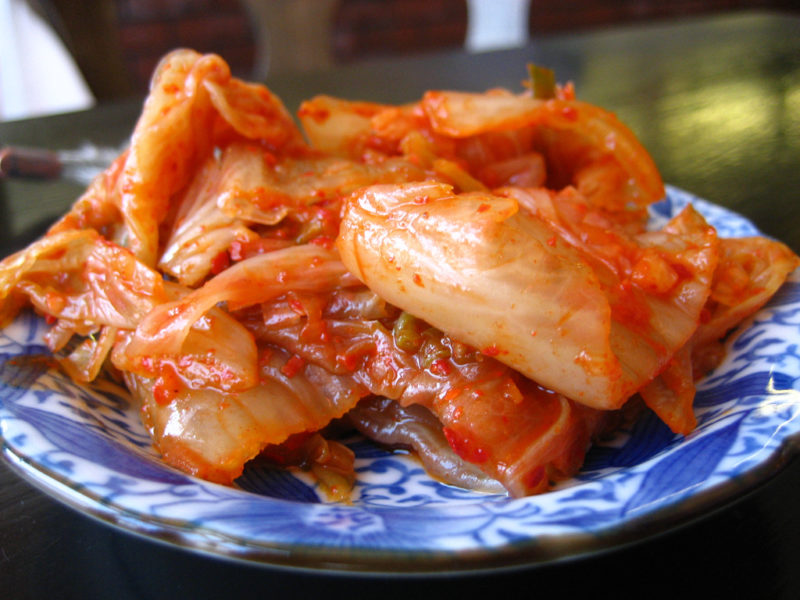
An original spicy dish will help diversify the diet. Maybe not everyone will like it, but obviously it will not go unnoticed. The exact proportions of the components cannot be calculated. Here everyone should be guided by their preferences.
The head of Beijing cabbage must be cut lengthwise into four parts, each of which must be rubbed abundantly with salt and sent to the refrigerator. Rinse thoroughly after 24 hours.
Next, you should take in equal proportions garlic and hot pepper. Grind them together until smooth. Brush with a paste slices of cabbage. Leave the dish for a day at room temperature and only then put it in the refrigerator.
How to pickle cabbage so that it is crispy
If you fermented cabbage, but it turned out soft, use the following tips:
- try the next time with salting, do not crush the cabbage, so it is better to maintain its initial properties;
- do not spare the salt, it will inhibit the growth of harmful microflora and prevent the product from peroxidizing;
- use only late varieties of cabbage;
- keep clean during cooking, as third-party microorganisms can prevent the fermentation process from proceeding as it should;
- as soon as the juice in the preparation becomes transparent, immediately remove the cabbage in a cool place.
The last recommendation, of course, is from the realm of fiction, but those who follow it claim that the result is excellent. The folk calendar recommends harvesting cabbage on the growing moon, for 5-6 days from the new moon. This method can be used along with other recommendations.
Pickle vegetables without vinegar
None of our recipes use vinegar. Although the taste of some preparations turns out to be similar to the taste of pickled vegetables. It's all about adding sugar. If it is put less than salt, the product is more likely to ferment and acquire a characteristic acidity.
An abundance of sugar inhibits the growth of lactic acid bacteria. If you add it twice as much as salt, the fermentation process will not work. The activity of microorganisms is inhibited. Juice from cabbage will taste like marinade.
We examined many ways to harvest healthy vegetables and realized that the salting process is practically no different from pickling.In order to serve a delicious vitamin salad, you do not need much time and energy, and the result can exceed all expectations.



